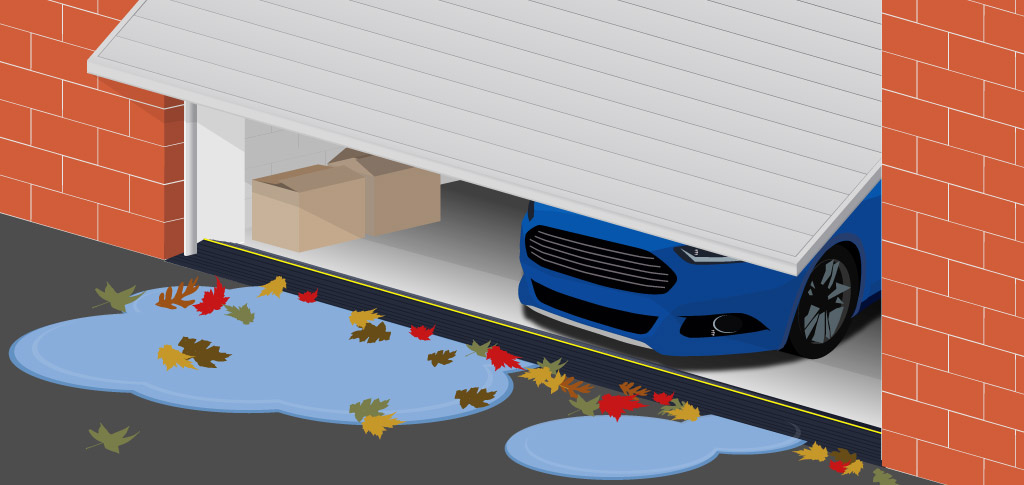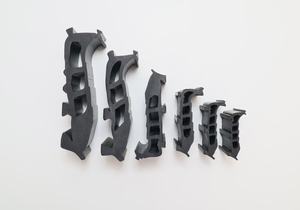

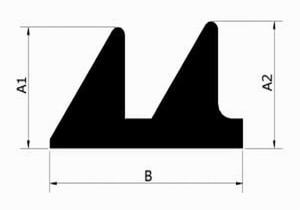

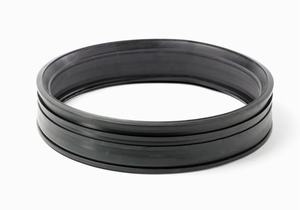
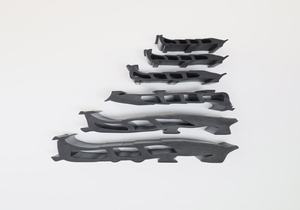
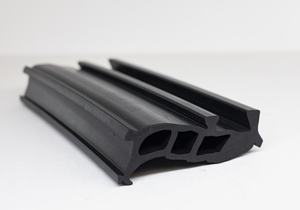

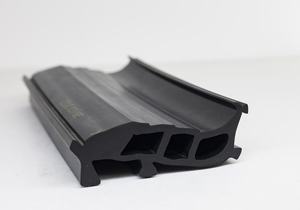
Infrastructure gaskets are essential components used in various infrastructure projects to ensure watertightness, structural integrity, and longevity in construction and civil engineering applications. These gaskets play a crucial role in sealing joints, connections, and interfaces in infrastructure systems such as roads, bridges, tunnels, pipelines, dams, and wastewater treatment plants. Infrastructure gaskets come in a wide range of types, materials, and configurations to suit different construction requirements, environmental conditions, and performance specifications, providing durable and effective sealing solutions for critical infrastructure projects. Here’s an extensive description of infrastructure gaskets:
- Purpose and Functionality:
- Infrastructure gaskets serve the primary function of creating a sealed barrier between two mating surfaces in infrastructure systems, preventing the leakage of fluids, gases, or solids.
- They accommodate movement, settlement, and vibration in structural components, joints, and connections while maintaining sealing integrity and structural stability.
- Infrastructure gaskets also provide protection against environmental factors such as water infiltration, corrosion, temperature fluctuations, and seismic activity, ensuring the long-term performance and durability of infrastructure assets.
- Types of Infrastructure Gaskets:
- Rubber Gaskets: Made from elastomeric materials such as EPDM, neoprene, or silicone, rubber gaskets provide flexibility, resilience, and durability to accommodate movement and vibration in infrastructure joints and connections.
- Compression Gaskets: Utilize compression mechanisms to create a tight seal between flange connections, pipe joints, and other structural interfaces, ensuring watertightness and stability.
- Expansion Joint Gaskets: Designed to seal expansion joints in bridges, buildings, and other structures, accommodating movement caused by temperature changes, seismic activity, or settlement.
- Waterstop Gaskets: Used in concrete structures such as dams, reservoirs, and wastewater treatment plants to prevent water infiltration through construction joints, expansion joints, and cracks.
- PVC Gaskets: Made from polyvinyl chloride (PVC) or thermoplastic elastomers (TPE), PVC gaskets provide chemical resistance, flexibility, and durability in piping systems, tunnels, and underground structures.
- Metal Gaskets: Fabricated from materials such as stainless steel, aluminum, or copper, metal gaskets offer high-temperature resistance, pressure sealing, and corrosion resistance in industrial piping, heat exchangers, and process equipment.
- Foam Gaskets: Made from foam materials such as polyurethane (PU) or polyethylene (PE), foam gaskets provide cushioning, insulation, and vibration damping in infrastructure applications such as roadways, railways, and building facades.
- Sealing Tape and Strips: Adhesive-backed tapes or strips made from rubber, silicone, or synthetic materials, used to seal joints, gaps, and cracks in infrastructure components such as windows, doors, and expansion joints.
- Material Composition:
- Infrastructure gaskets are constructed from materials chosen for their compatibility with specific construction materials, environmental conditions, and performance requirements.
- Common materials include rubber, EPDM, neoprene, silicone, PVC, TPE, polyurethane, fiberglass, stainless steel, aluminum, and copper.
- Gasket materials may be reinforced with fabric inserts, metal inserts, or composite materials to enhance strength, stability, and sealing effectiveness.
- Design and Construction:
- Infrastructure gaskets are available in various designs, profiles, and configurations to suit different sealing requirements, joint geometries, and performance specifications.
- They may feature molded or extruded construction, with different cross-sectional shapes, such as square, rectangular, round, or custom profiles.
- Gaskets may incorporate sealing lips, flanges, ribs, or ridges to improve sealing effectiveness, pressure distribution, and resistance to movement.
- Installation Process:
- The installation of infrastructure gaskets requires careful preparation, surface cleaning, and adherence to manufacturer’s instructions.
- Gaskets are typically placed into the joint or interface between mating surfaces, ensuring proper alignment, compression, and contact pressure.
- Fasteners, adhesives, or mechanical clamps may be used to secure the gaskets in place and maintain their position during construction, operation, and environmental loading.
- Functionality and Performance:
- Infrastructure gaskets are designed to provide reliable sealing performance over the service life of the infrastructure project, withstanding exposure to weathering, UV radiation, temperature fluctuations, and mechanical stresses.
- They maintain sealing integrity under static and dynamic loading conditions, including thermal expansion, vibration, settlement, and seismic activity.
- Gaskets undergo rigorous testing and certification to meet industry standards and regulatory requirements for durability, reliability, and performance, ensuring compliance with construction codes and specifications.
- Applications:
- Infrastructure gaskets are used in a wide range of construction and civil engineering applications, including:
- Transportation infrastructure: Roadways, bridges, tunnels, railways, airports.
- Water and wastewater systems: Pipes, manholes, tanks, treatment plants.
- Building construction: Facades, roofs, windows, doors, expansion joints.
- Energy infrastructure: Power plants, substations, pipelines, storage tanks.
- Marine and coastal structures: Ports, harbors, docks, breakwaters, seawalls.
- Industrial facilities: Factories, refineries, chemical plants, mining operations.
- Civil engineering projects: Dams, levees, retaining walls, culverts, irrigation systems.
- Infrastructure gaskets are used in a wide range of construction and civil engineering applications, including:
- Maintenance and Inspection:
- Infrastructure gaskets require periodic inspection, maintenance, and replacement to ensure continued sealing effectiveness and performance.
- Routine inspections may include visual assessments, leak checks, gasket compression tests, and cleaning to remove debris, corrosion, or fouling.
- Gasket replacement may be necessary if signs of wear, deterioration, or damage are detected during inspections, ensuring optimal sealing integrity and longevity of infrastructure components.
In summary, infrastructure rubber are critical components in construction and civil engineering projects, providing sealing solutions that ensure watertightness, structural integrity, and longevity in various infrastructure applications. With their diverse types, materials, designs, and applications, infrastructure gaskets play a vital role in enhancing the safety, reliability, and sustainability of infrastructure systems, contributing to the efficiency and resilience of built environments.

